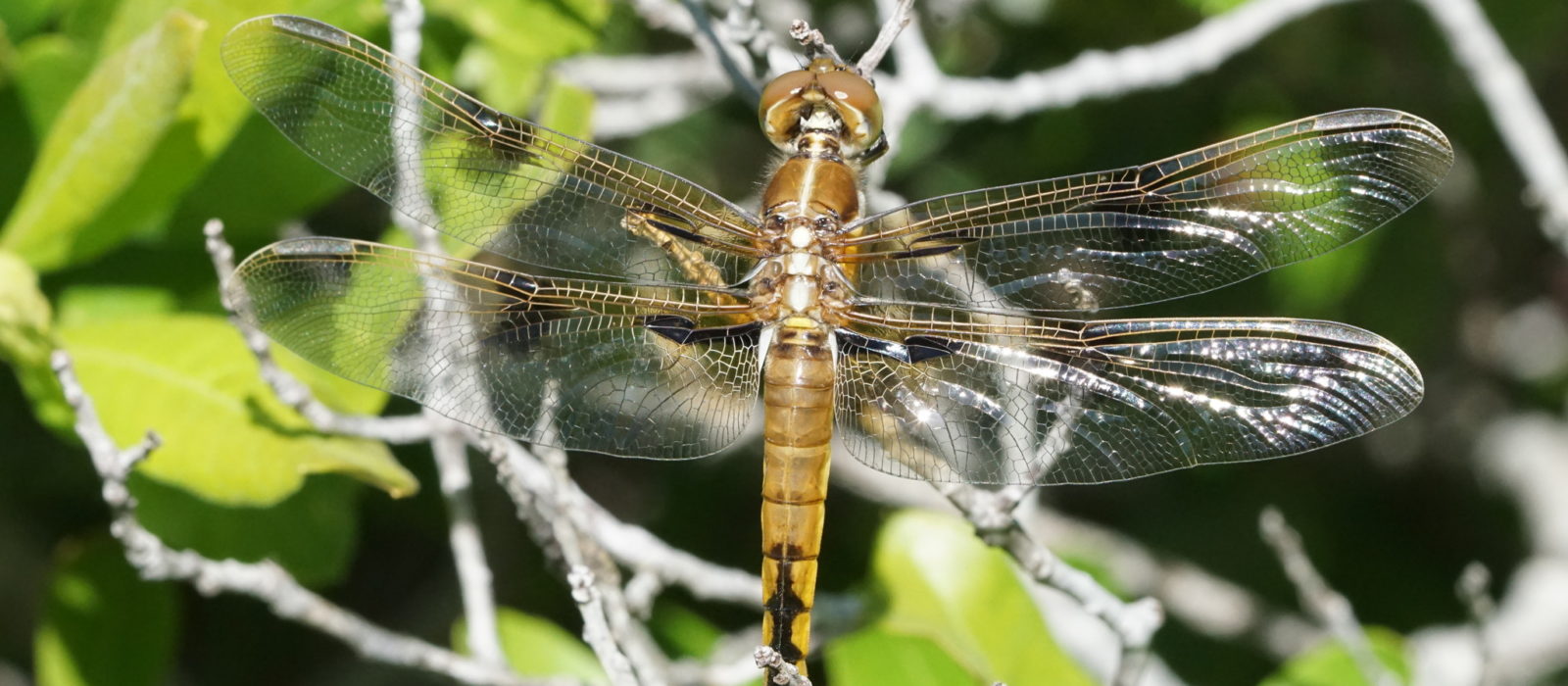DRAGONFLIES AND DAMSELFLIES: ODONATA
Odonates belong to a very ancient order of insects. The earliest known ones date from the Carboniferous Period (360 to 280 million years ago), some of which had wingspans of 24-29 inches! (Borradaile et al., 1958). A total of 61 species of these specialized insects have been recorded on Martha’s Vineyard. This compares with 166 species recorded in all of the Commonwealth of Massachusetts (Nikula et al. 2003), 97 species recorded on Cape Cod (Carpenter, 1991), and only 17 species known from Nomans Land Island, a small satellite island of 628 acres two miles off the southwest corner of Martha’s Vineyard and a part of the Town of Chilmark. These statistics illustrate an important point: the farther away from the main continental land mass, the fewer habitat types there are and thus fewer species are present.
Thorough exploration of Martha’s Vineyard for odonates has only begun relatively recently. There is a certain amount of historical data, but some of that does not reflect current taxonomy. It is clear that the distributions of some species have changed in the last 100 years. Some species present years ago are no longer here, and some here now have probably arrived only recently, particularly those with very limited distributions on the island. It is quite possible that more resident species remain to be discovered, but that number is probably less than ten. Another half dozen species of vagrants are also possible, although it is unlikely any will equal the Blue-eyed Darner (Aeshna multicolor) collected at Edgartown in 1943, the only one of its species ever recorded east of the Mississippi River. The specimen is in the Beatty collection at Pennsylvania State University (Donnelly, 1994). A small voucher specimen collection of other species is being assembled which is stored at the Polly Hill Arboretum.
The zoogeographical affinities of the species known from the island are indeterminate. However, to the extent one can speculate, there seem to be a few more species with primarily southern distributions than there are with primarily northern distributions. More work is needed on this matter.
Odonates are particularly sensitive to water quality. Some species will only occur in pristine environmental conditions and others are more tolerant of slightly or even greatly degraded habitats. Continuous monitoring of the species in such places as some of the south shore coastal ponds for possible changes in odonate populations could be a useful way to track changes in water quality.
In the following list, brief descriptions of abundance and distribution on Martha’s Vineyard are given, though they must be considered tentative because serious study is so recent. Those species recorded on Nomans Land Island are indicated by “N.” Useful resources for studying and identifying Odonates include Dunkle (2000), Nikula et al. (2002), and Lam (2004).
Allan Keith; edited by Matt Pelikan, November 28, 2021
References:
Borradaile, L. A., F. A. Potts, L. E. S. Eastham, J. T. Saunders, and G. A. Kerkut. 1958. The Invertebrata. Cambridge University Press, Cambridge. 795 pp.
Carpenter, V. 1991. Dragonflies and damselflies of Cape Cod. The Cape Cod Museum of Natural History, Natural History Series No. 4. 79 pp.
Donnelly, T. W. 1994. Aeshna multicolor from Cape Cod. Argia 6(3):3.
Dunkle, S. 2000. Dragonflies through Binoculars: A Field Guide to Dragonflies of North America. Oxford University Press, Oxford, UK. 266 pp.
Lam, E. 2004. Damselflies of the Northeast. Biodiversity Books, Forest Hills. 96 pp.
Nikula, B., J. L. Loose, and M. R. Burne. 2003. A field guide to the dragonflies and damselflies of Massachusetts. Published by Natural Heritage & Endangered Species Program, Massachusetts Division of Fisheries and Wildlife. 197 pp.
Web Resources:
https://www.massaudubon.org/our-conservation-work/ecological-management/inventory-monitoring/odonate-monitoring-project Statewide resource giving results of an ongoing Odonate survey in Massachusetts. Maintained by Massachusetts Audubon.
